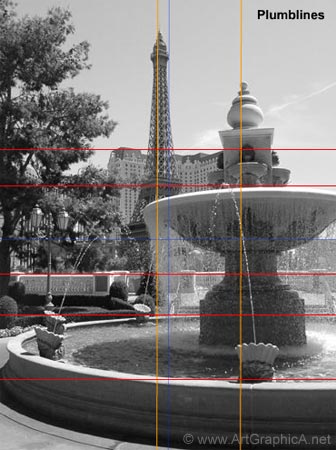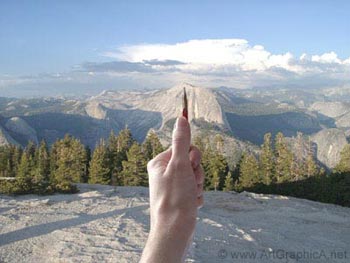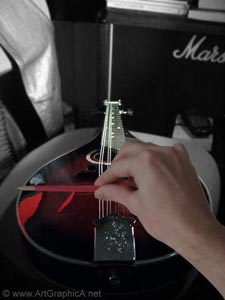 Taking a few main reference points and drawing some faint horizontal lines on our page, we can begin to divide up a scene. By having some basic references, it becomes easier to subsequently draw and relate our features to fit into their respective places.
Taking a few main reference points and drawing some faint horizontal lines on our page, we can begin to divide up a scene. By having some basic references, it becomes easier to subsequently draw and relate our features to fit into their respective places.Plumblines
To progress from a beginner it is important to wean yourself from the dependency off using grids, projectors or tracing, though there are principles we can carry across to help our drawings without artificial aids. [Please note that I am not condemning artificial mechanisms, but if they are to be used it is better to use them once you have mastered your craft].
One of the most difficult and primary tasks is knowing where to begin as once we start to lay down some elements the rest will have to relate to our basis and fit proportionally into the drawing. 99% of the time, you are liable to be working on some form of rectangle. I try to imagine the two lines that divide the page into four equal quarters (you may even want to lightly draw in this dissecting crosshair). Spend a couple of minutes studying your source and make note of the main features (if the horizon is visible, establish the plane early on). Extending vertical and horizontal lines from major objects in our scene, it becomes easier to spatially judge these lines and their distances, particularly if you started with two lines to dissect the page into quarters (marked in blue in the left illustration).
By creating these lines, the page is divided up into more digestible sections, and it is much more likely that the objects to be drawn will better relate to one another within our two-dimensional realm. In some respects it is a little like using a partial grid system with much less of the hassle.

Using the Pencil for Measurements (Sighting)
The pencil serves as the ideal tool at hand for making rough measurements. If you hold it aloft at arms length you can use the tip of the pencil down to the top of your thumb to gauge heights (close one eye when you do this to kill the stereoscopic vision). Using this as a guide, we can check the heights of other objects before us, and make a more informed estimate of how they relate in size. To measure widths, simply hold the pencil horizontally instead.

Judging Angles
The pencil also serves as a useful sort of plumbline for measuring angles. For example, if drawing this mandolin, we might better perceive the curvature by holding out the pencil horizontally to the item being drawn and viewing the foreshortened teardrop shape in dissected quarters.
Tutorial is copyright of ArtGraphica